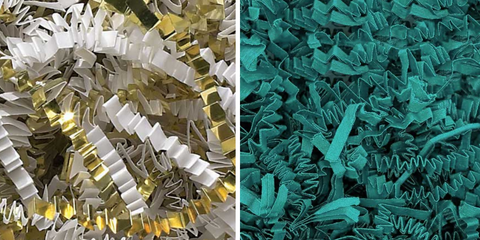At Still, “sustainability” and “eco-friendly” aren’t just buzzwords – they're a vital part of who we are as a business. We have a responsibility to help care for and protect our planet. We take this responsibility seriously.
On this Earth Day, we want to talk about some of our green practices by sharing what we’re already doing, how we’re improving and the new practices we’re implementing.
Our Commitment to Sustainability: What We’re Doing and How We’re Improving
We only have one planet, and we are committed to helping protect our home through our green practices. From our packaging to our shipping, we employ a number of eco-friendly practices into our operations.
Here’s what we’re doing and how we’re improving some of our current practices.

Our Tea Leaves (An Existing Practice)
Still’s tea leaves can be steeped up to three times. Not only does this save you time (forget having to dump out the tea leaves after each cup), but it also cuts down on how much tea you’re using.
Pro tip: Use your leftover tea leaves for composting.

Our Crinkle Paper (A Practice We’re Improving)
We use white and gold crinkle paper for our packaging, but we’re making the switch to eco-friendly, teal crinkle paper that’s:
- Made from recycled paper
- Dyed with water-soluble ink that’s non-toxic
Not only is our new paper eco-friendly, but it also adds a fun pop of color to our packaging. Feel free to reuse it for gift wrapping.

Our Gift Bags (A Practice We’re Improving)
We've traded our regular white gift bags for kraft white shopping bags. Why? Because paper bags are:
- Strong and durable
- Biodegradable
- Recyclable
- Reusable
They’re easy to fold up and reuse for future gifts. Save and add our teal crinkle paper to make your bag gift ready.

Our Packaging Paper (A Practice We’re Improving)
We’re tossing out our old packaging paper and making the switch to recycled kraft paper. We love that this paper is:
- Exceptionally strong
- 100% eco-friendly
Kraft paper naturally degrades and can be recycled. Because it’s strong and durable, you can reuse it for other purposes, such as:
- Packing items for moving
- Starting campfires
- Cleaning glass with vinegar

Our Glass Jars (Existing Practice)
We’ve always used glass jars for our teas, and we will continue to use them. Glass doesn’t alter the tea’s flavor, and our adorable jars can easily be reused for whatever you please or recycled.

Our Boxes (A Practice We’re Improving)
Our boxes are one of the most important parts of our packaging, but we felt we could do better. That’s why we’re making the switch from regular brown boxes to recycled boxes.
Our new boxes will be:
- Made from post-consumer and recycled cardboard
- Printed using algae-based or water-based ink
Our NEW Green Practices
We’re always looking for new ways to incorporate sustainable products into our operations.
Here are some of our NEW green practices.

Gold Pouches (NEW)
As much as we love our old gold pouches (and their glorious shine), we’re trading them in for an eco-friendlier option.
Our new FDA-compliant pouches have a zip top, so they’re easy to reuse. Just recycle them when you’re done.

Tea Bags (NEW)
Tea bags make it easy and convenient to steep our loose-leaf tea, but we wanted a better, more environmentally friendly option for our customers. That’s why we had corn fiber tea bags made just for our brand.
Unlike typical nylon tea bags, which can leech microplastics into your tea, corn fiber is natural and biodegradable.

Reusing Boxes (NEW)
When customers place big orders, we do our best to reuse larger boxes from other vendors – like Amazon or local suppliers – instead of buying new boxes. This cuts back on waste and reduces the environmental impact of box production.
So, if you place a large order and it comes in a company box you don’t recognize, it’s just us reusing big boxes for shipping.
At Still, we are committed to sustainability and our customers. We’re always looking for new ways to improve our packaging and shipping to reduce our environmental footprint without compromising on the quality you expect from our brand.
We’d love to hear from you! What are some ways you’re improving your carbon footprint?